EverWed
About the Project
EverWed is a digital product that helps friends & family members of the newly-engaged couples to coordinate the wedding ceremony. It empowers the wedding parties and vendors to complete tasks and streamline decisions collectively through a smart itinerary system.
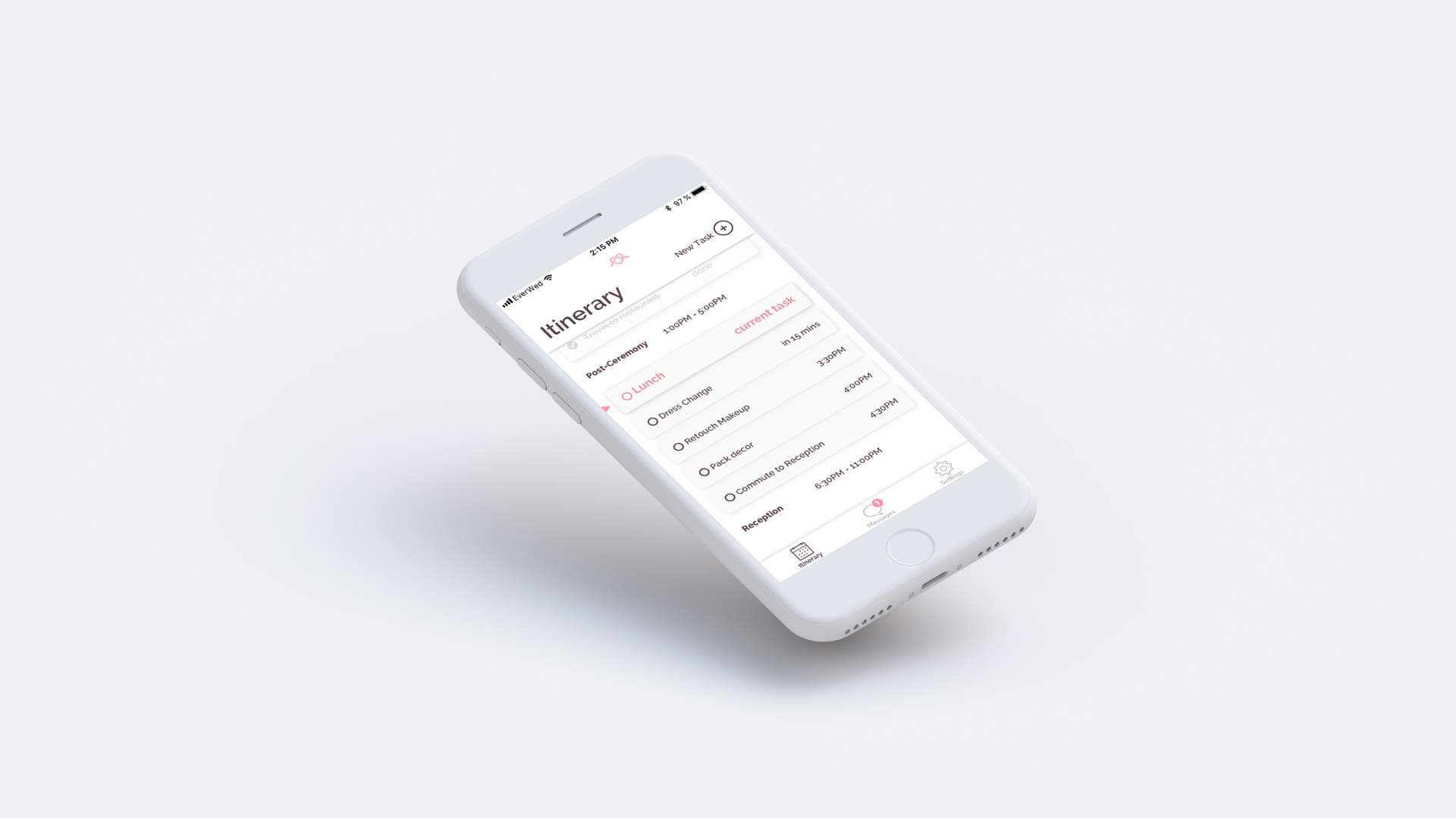
Problem Space
Weddings are expensive and delays cause frustrations to newly-engaged couples. Quite often, couples have to over budget to compensate for additional vendors’ time. As a result, the couples will not be able to enjoy their wedding day due to these unexpected changes.
My hypothesis was that newly engaged couples are willing to plan and coordinate their own wedding day, so they can save money and enjoy their most important day.
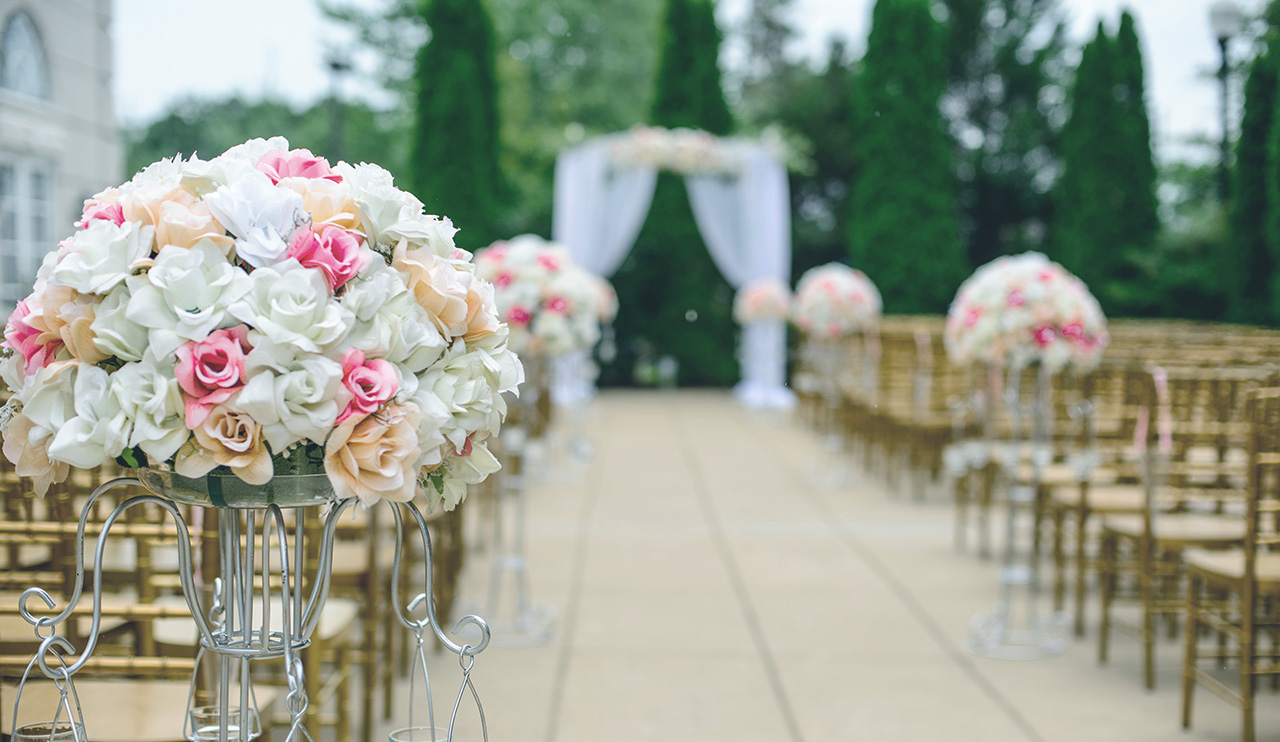
Initial survey and interview insights with married couples
I conducted surveys that asked about people's past wedding experiences. From those quantitative insights, I was able to formulate interview questions for married couples.
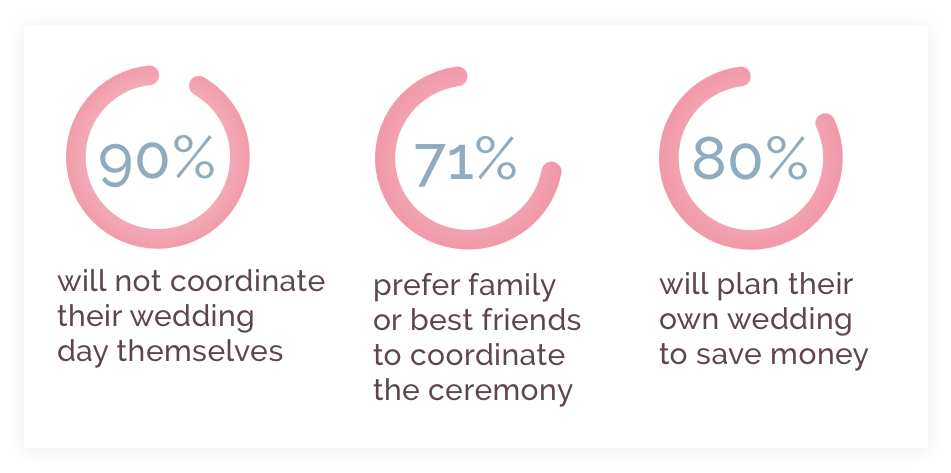
Better communications between wedding parties, vendors and couples are needed.
Research pivot
Initially, I assumed my primary users were the newly-engaged couples who are willing to coordinate their wedding day but my insights proved not possible.
So who is my primary user?
I felt stuck so I dug deeper into my wall of sticky notes and noticed a trend that most couples rely on their best friends or family members (the wedding party) during the ceremony.
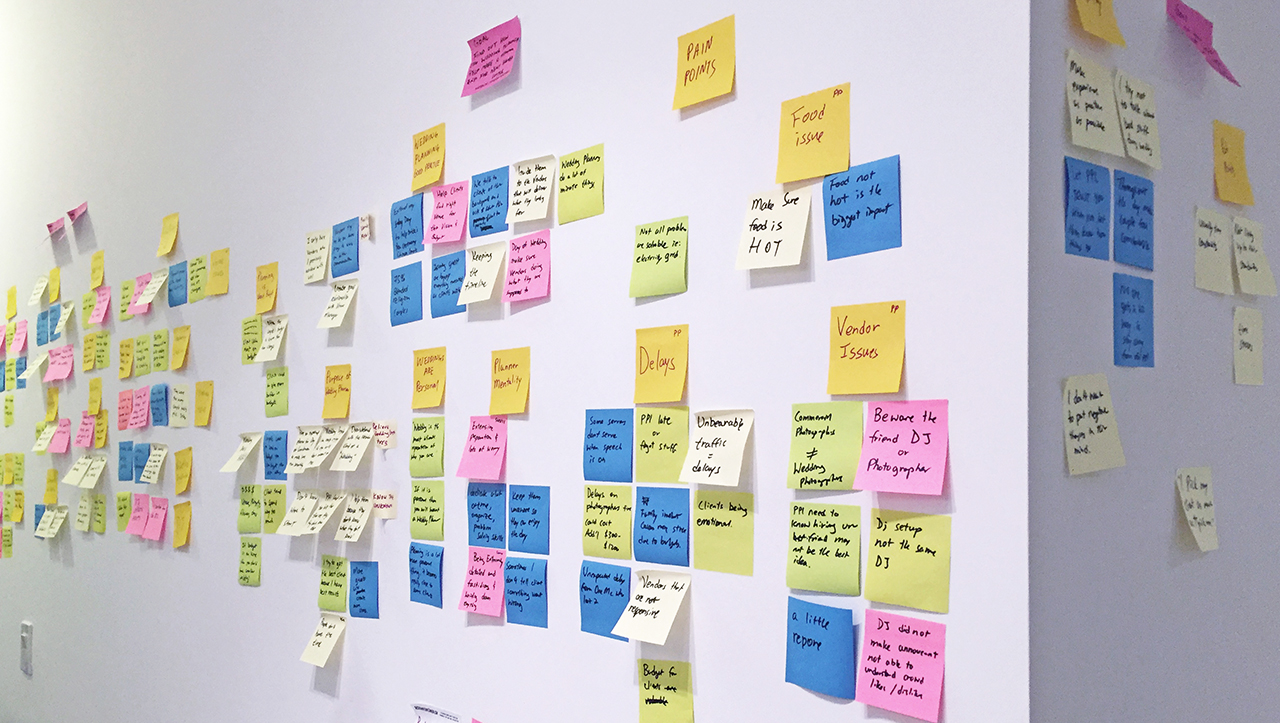
Yes, my new primary users are the Wedding Parties! However, this new group of users don't have coordinating experiences, which may cause more stress and frustrations for the couple.
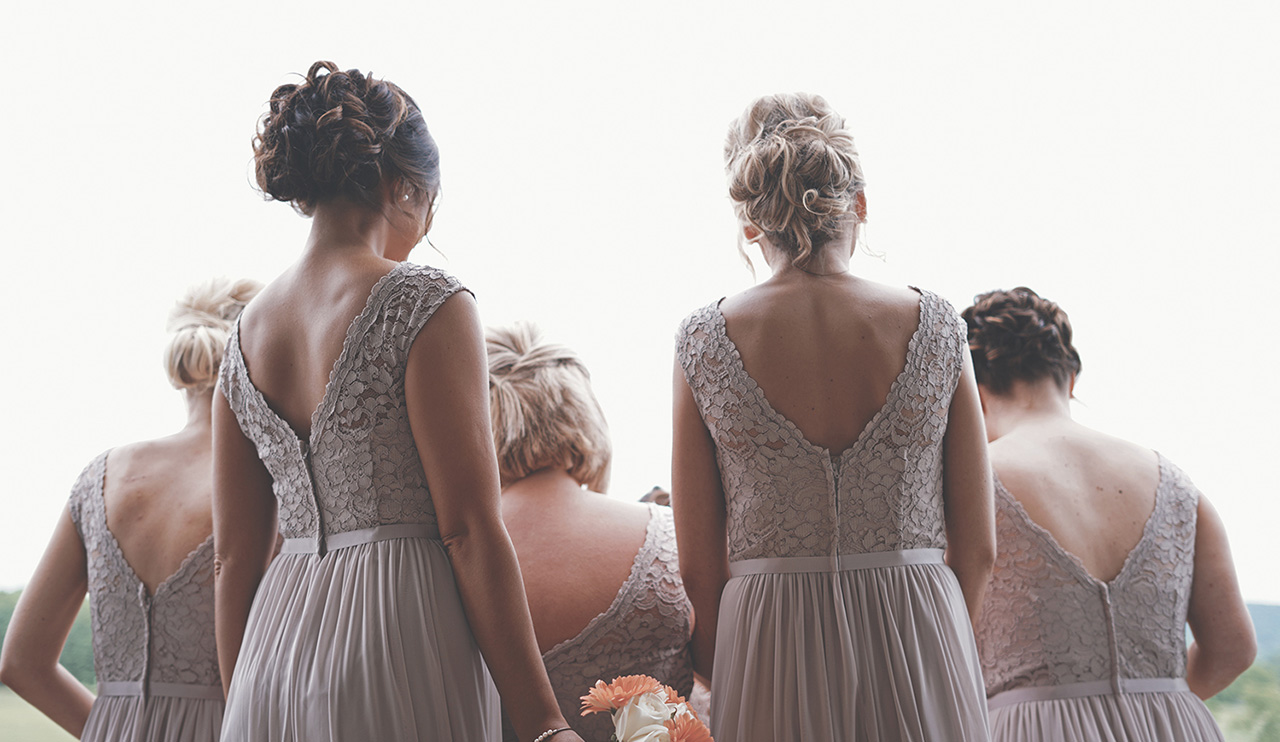
Interview insights with wedding planners & photographers
The key to stress-free weddings are to have experienced wedding coordinators and vendors. I reached out and interviewed wedding planners and photographers to understand how they excel in client satisfaction. I found out that keeping taps on the schedule, vendors and communications are keys to success in weddings.

Keeping guests happy, stay on schedule, making sure vendors are doing what they are supposed to do.
Always keep the wedding couples unaware of minor problems so they can enjoy the day.
How might we help wedding parties streamline decisions in order to ensure a successful wedding experience?
Personas
I synthesized two personas after gathering insights from Married couples, Wedding Planners, and Photographers. The 1st persona will be the primary user from the wedding party and she will be someone who the bride will trust as a mindful and diligent person. While the 2nd persona will be the bride since she will be handing off the wedding plan to the 1st persona who will be coordinating the wedding plan.
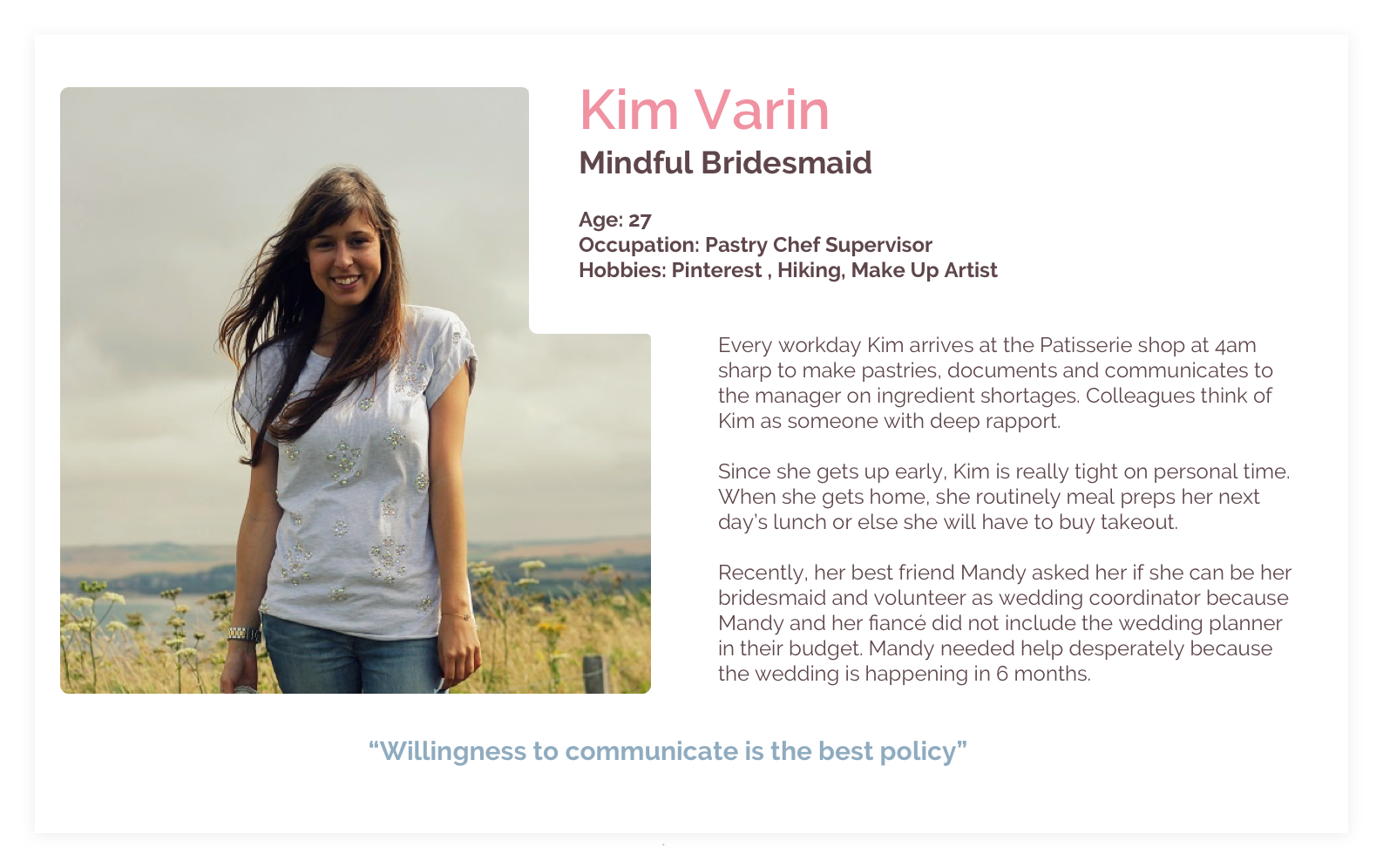
Experience map
The experience map was influenced by the survey and interview insights gathered. Also this is a great way to put our perspectives into the shoes of Kim Varin, the Mindful Bridesmaid. Let’s take a look at Kim’s experience as she coordinates her best friend’s wedding in the span of 6 months.
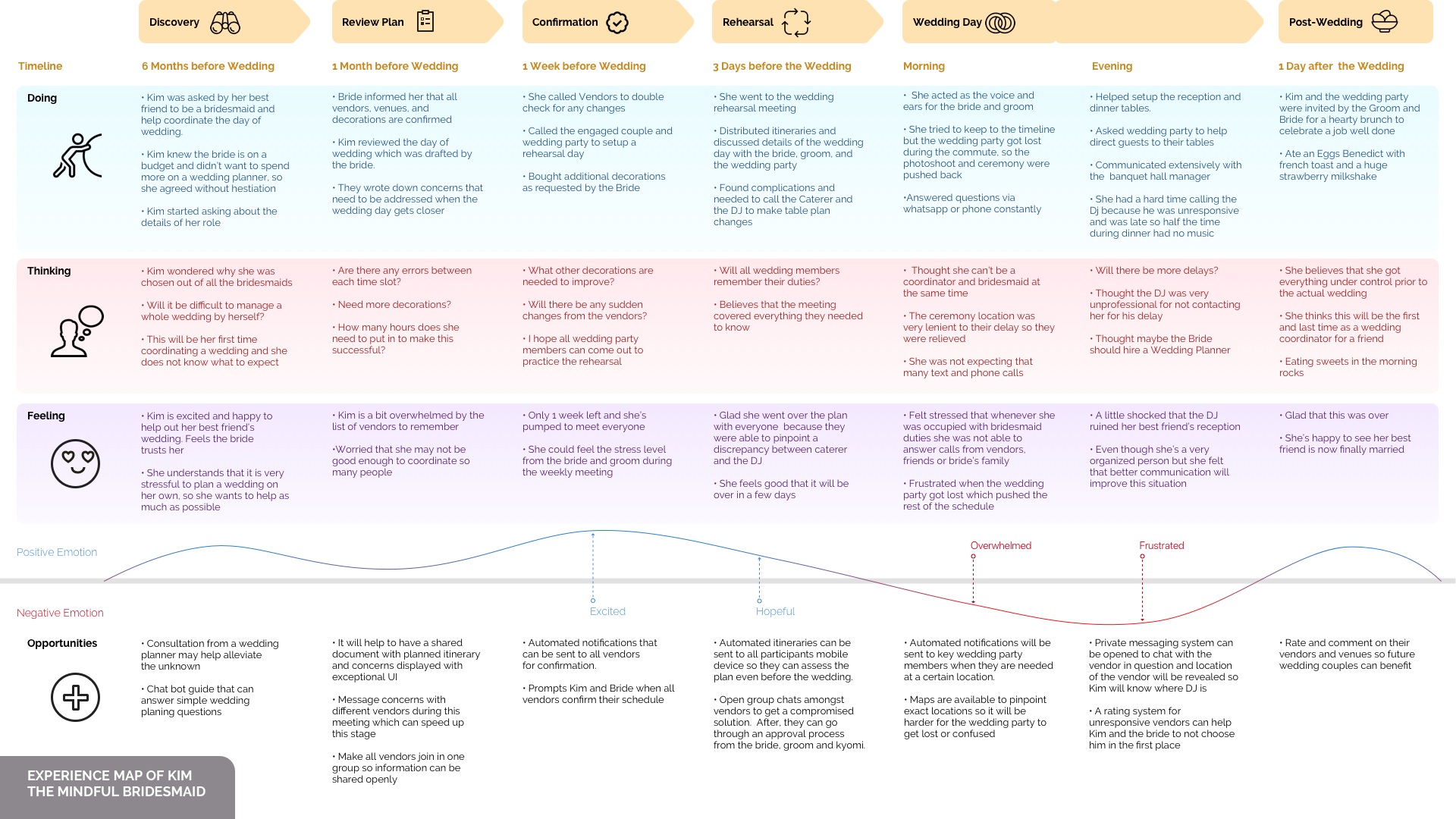
Key insights
From the experience map, I’ve selected the most emotionally active part to showcase Kim’s frustrations as a wedding coordinator with zero experience. This opens up opportunities for me to hypothesize solutions that can help alleviate Kim’s paint points.
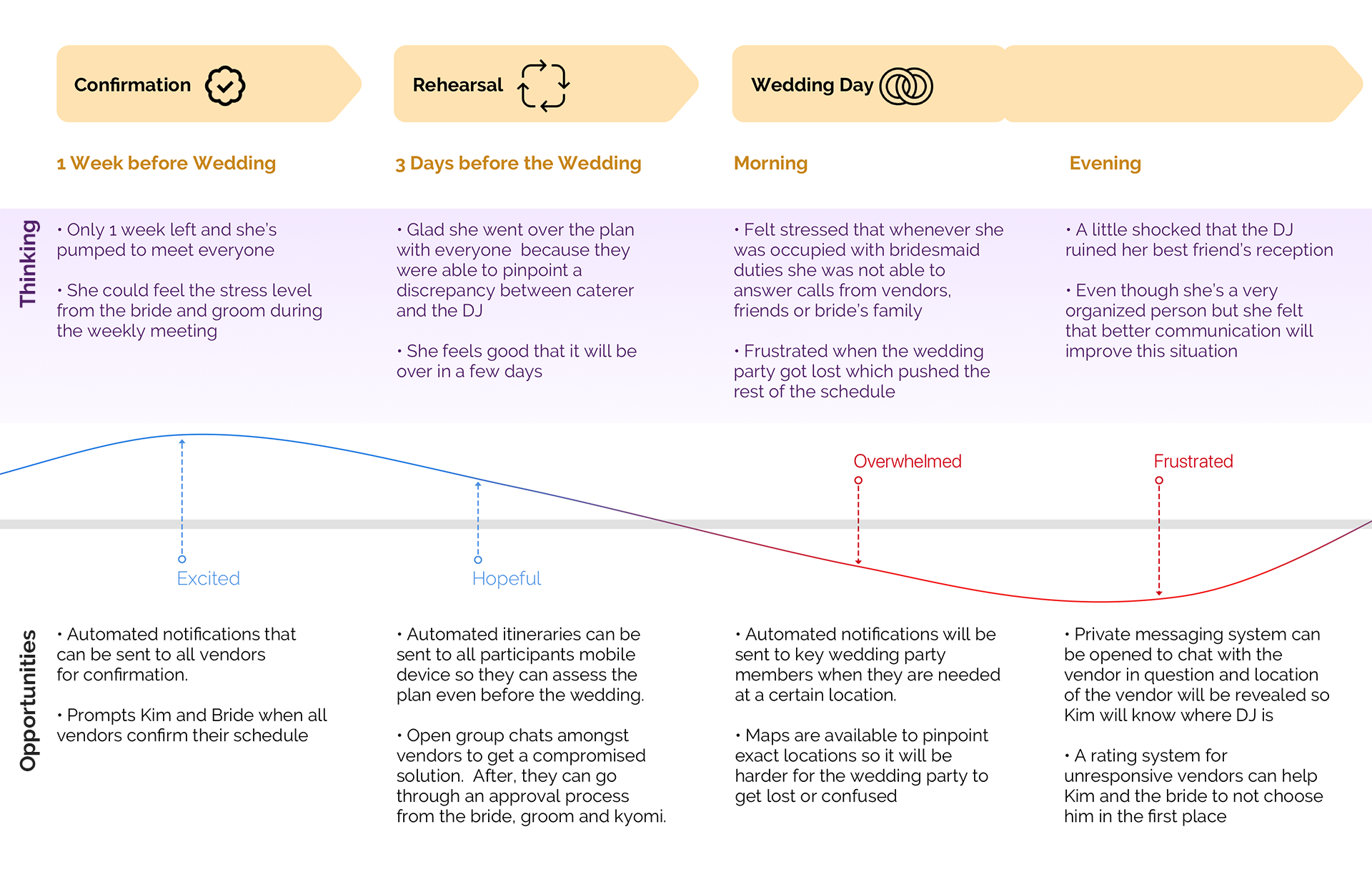
Sketches
Before I start sketching for low fidelity wireframes, I located opportunities from the experience map and turned them into user stories which ultimately became goals, so I can sketch ideas with purpose.
Goals:
- A way to notify wedding party and vendors to stay on schedule
- To streamline decision making in an event of unexpected delays or changes
- Let the newly-engaged couples enjoy their wedding day hassle-free
- Quickly access information at a glance
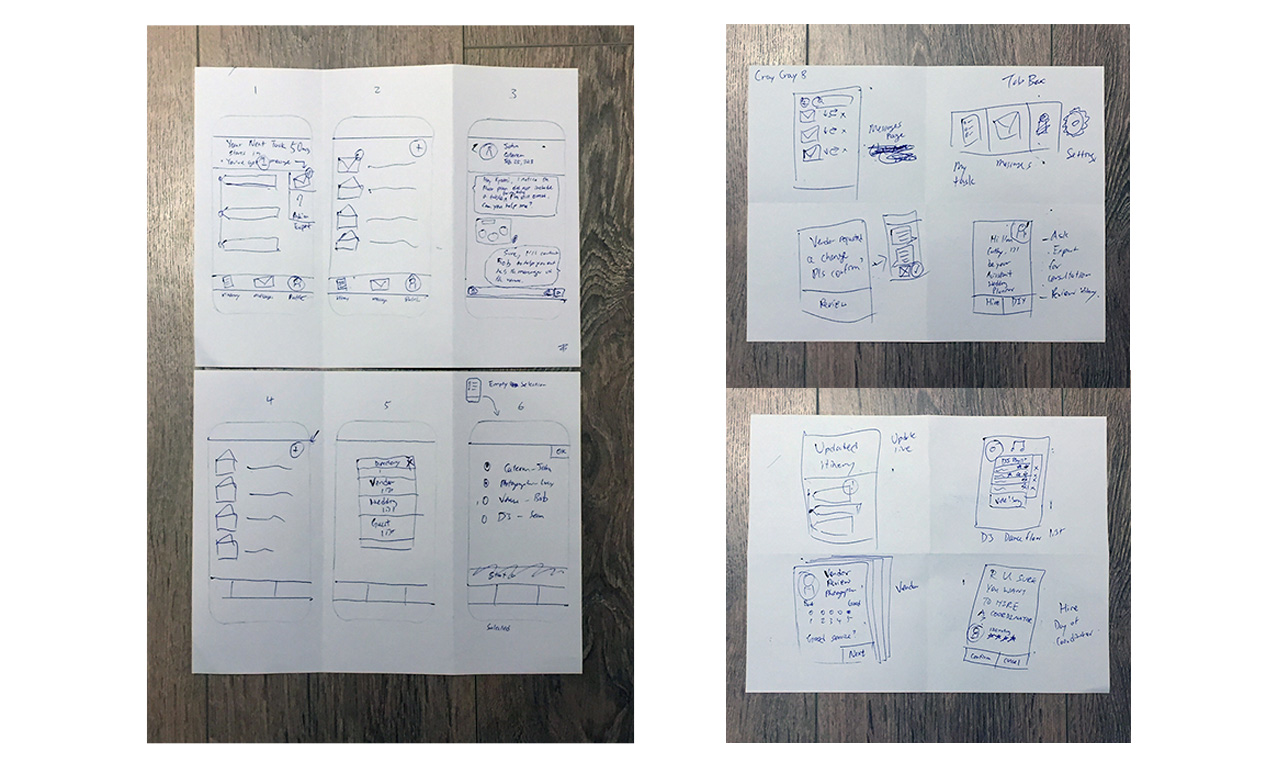
Low fidelity usability tests
I conducted 5 usability tests for each of the 3 iterations. My goal was to validate if the solutions I have designed made sense to users who may coordinate their best friends or family members' weddings.
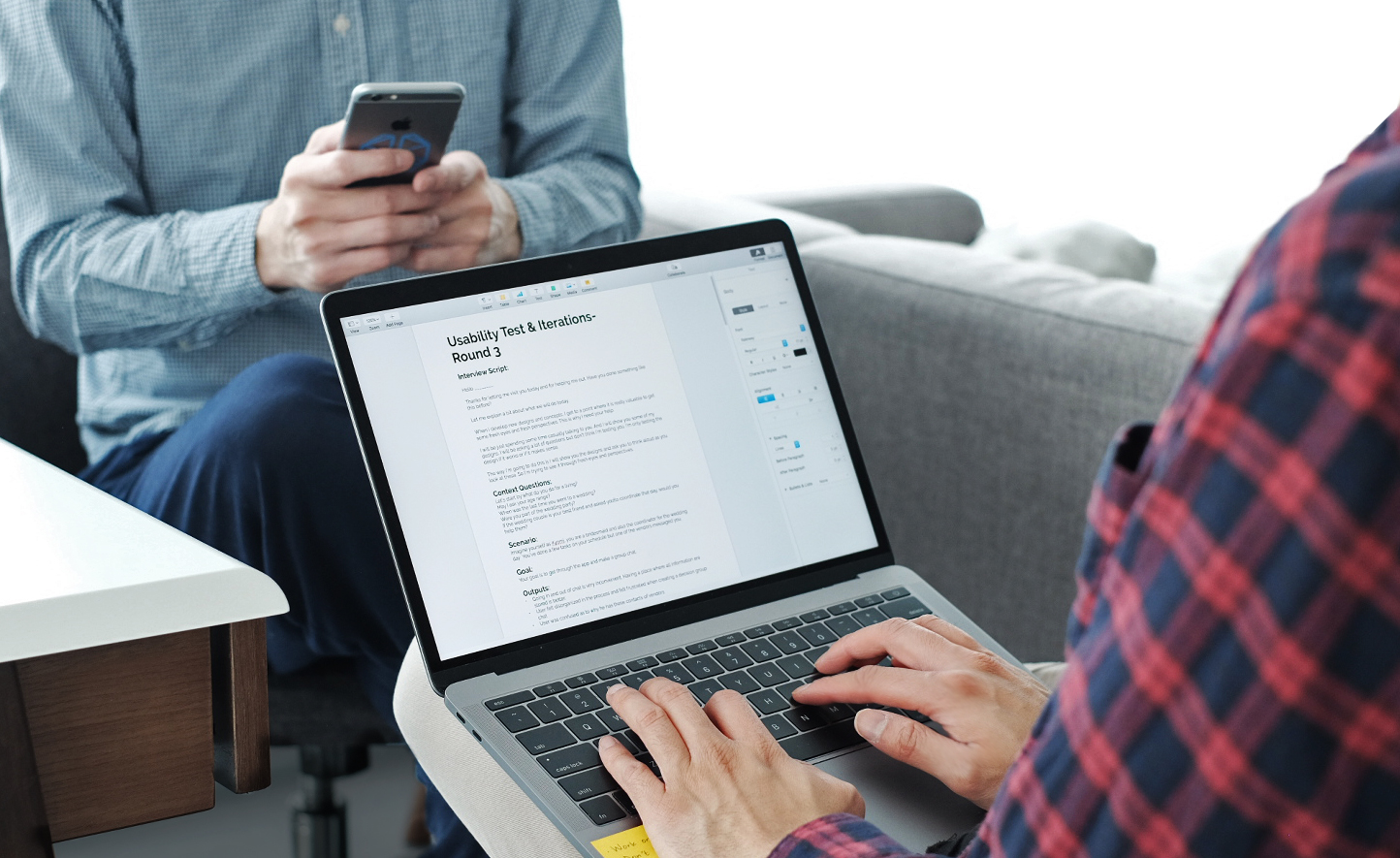
EverWed V1
Users felt frustrated because there are too many steps to invite vendors and approve a decision. Going in and out of the chat caused them to lose track of their goals. The lack of clear goal and scenario confused the users. So I’ll have to improve on the UI to be less confusing, rephrase my scenario and improve the user flow for the 2nd usability testing.
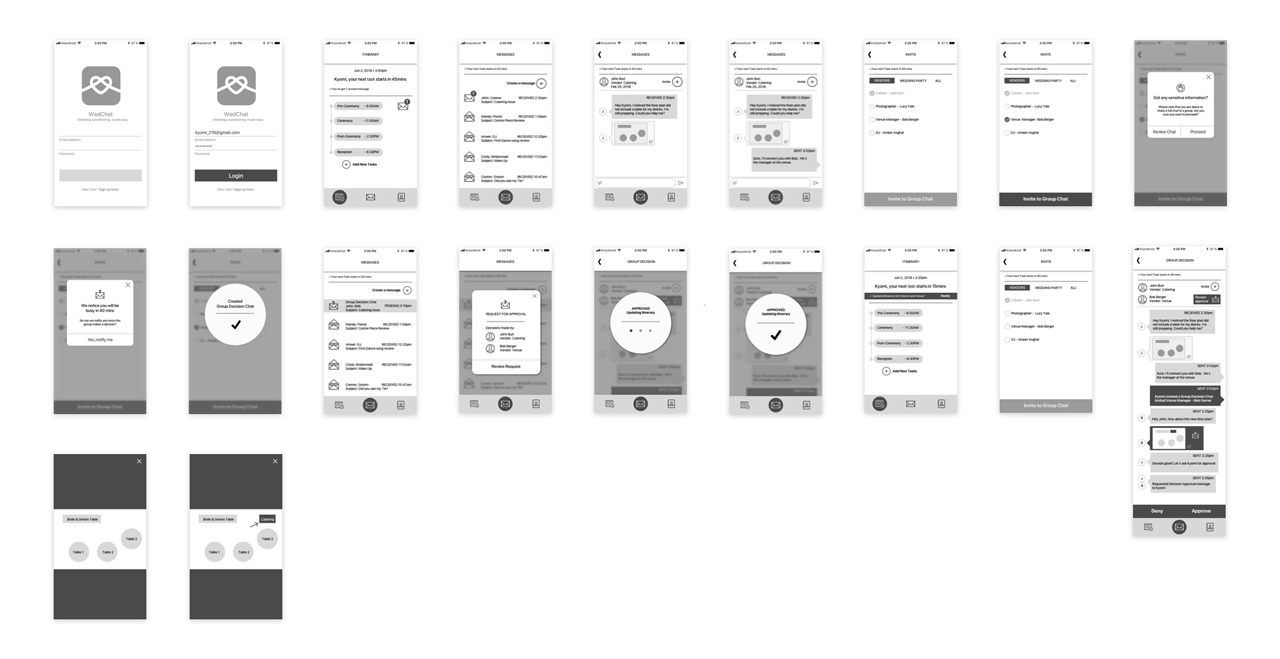
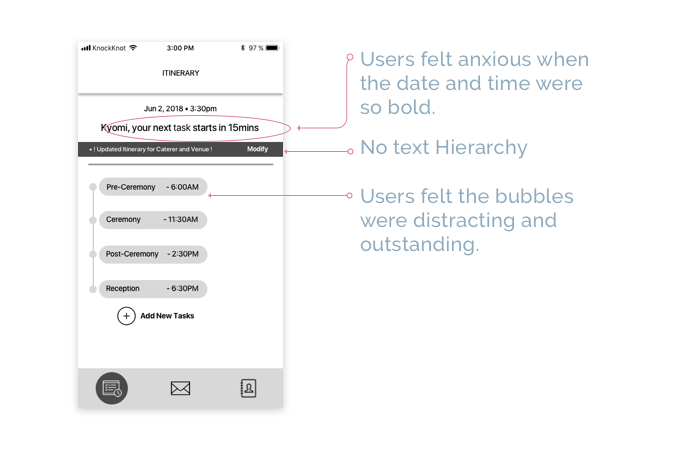
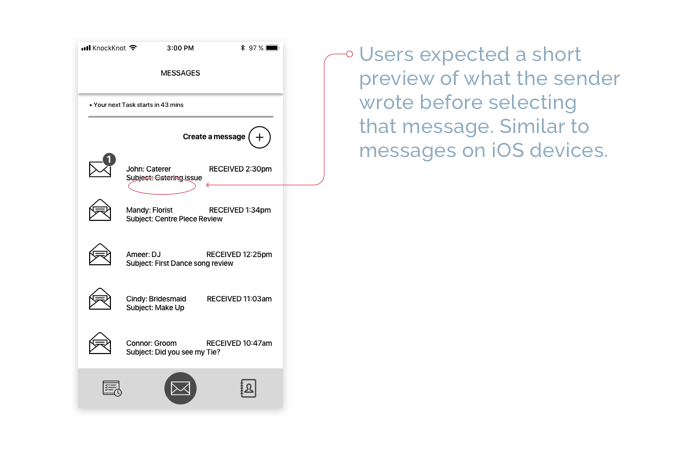
EverWed V2
I changed the UI design into Card style in an attempt to let users absorb data at a quick glance, instead of searching. However, my V2 execution seem to confuse the users with lack of greyscale hierarchy which led to cognitive information overload. I could even see their eyebrows condensing into a dried prune, so I stopped my interviews midway and revised the screens accordingly.
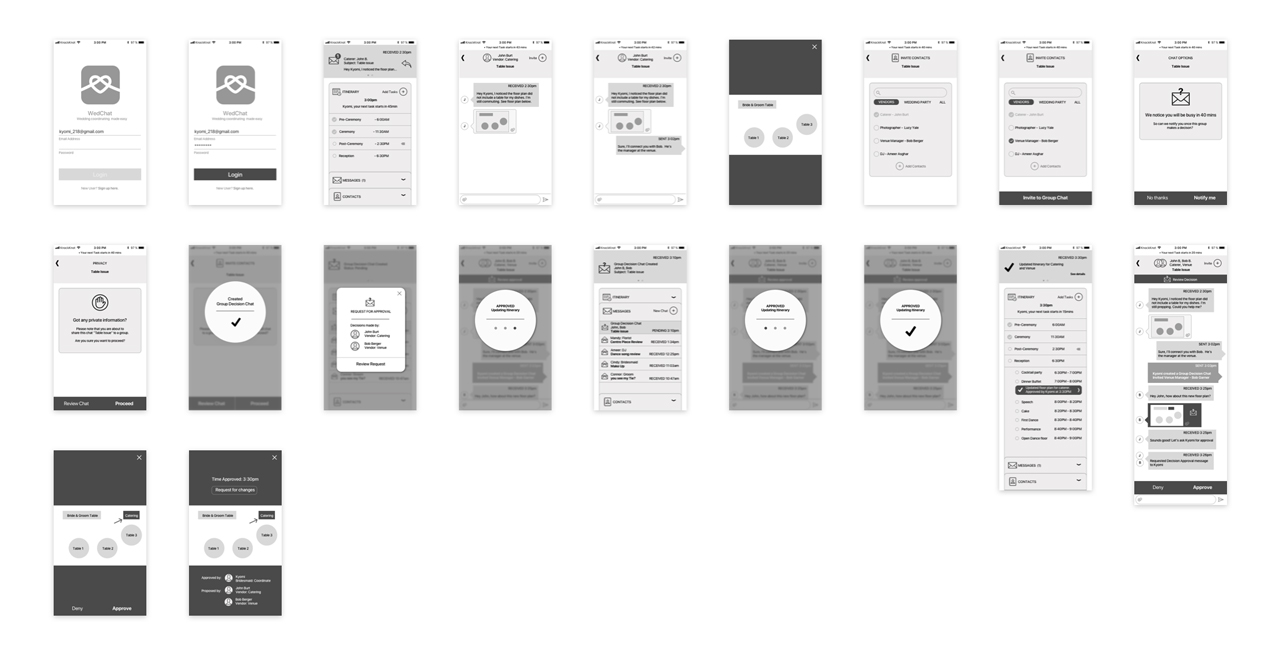
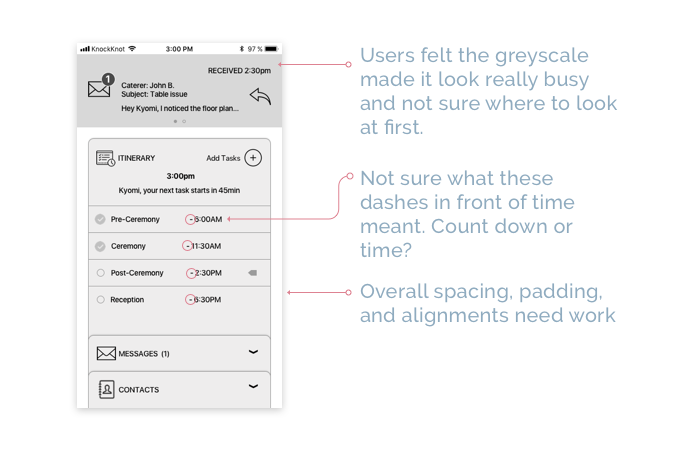
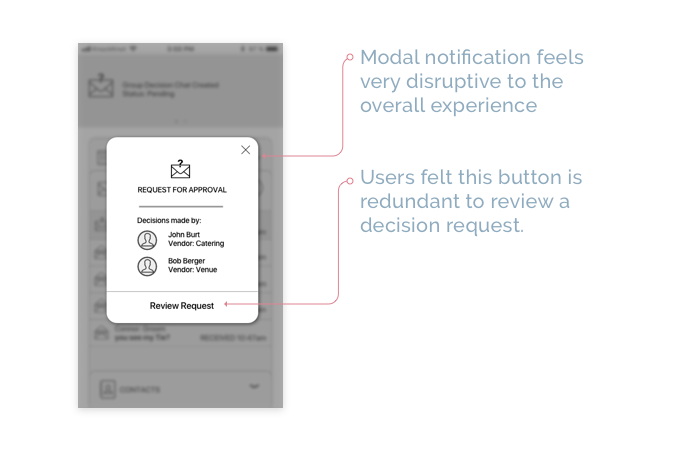
EverWed V3
I modified the greyscale hierarchy and the way I presented the scenario for V3, which ultimately improved the user experience. Although there were graphic issues but most users understood where they are at and how to navigate to the next Call-To-Action. For the next iteration, I will be adding the tap bar back from V1 because users find it difficult to multitask between pages.
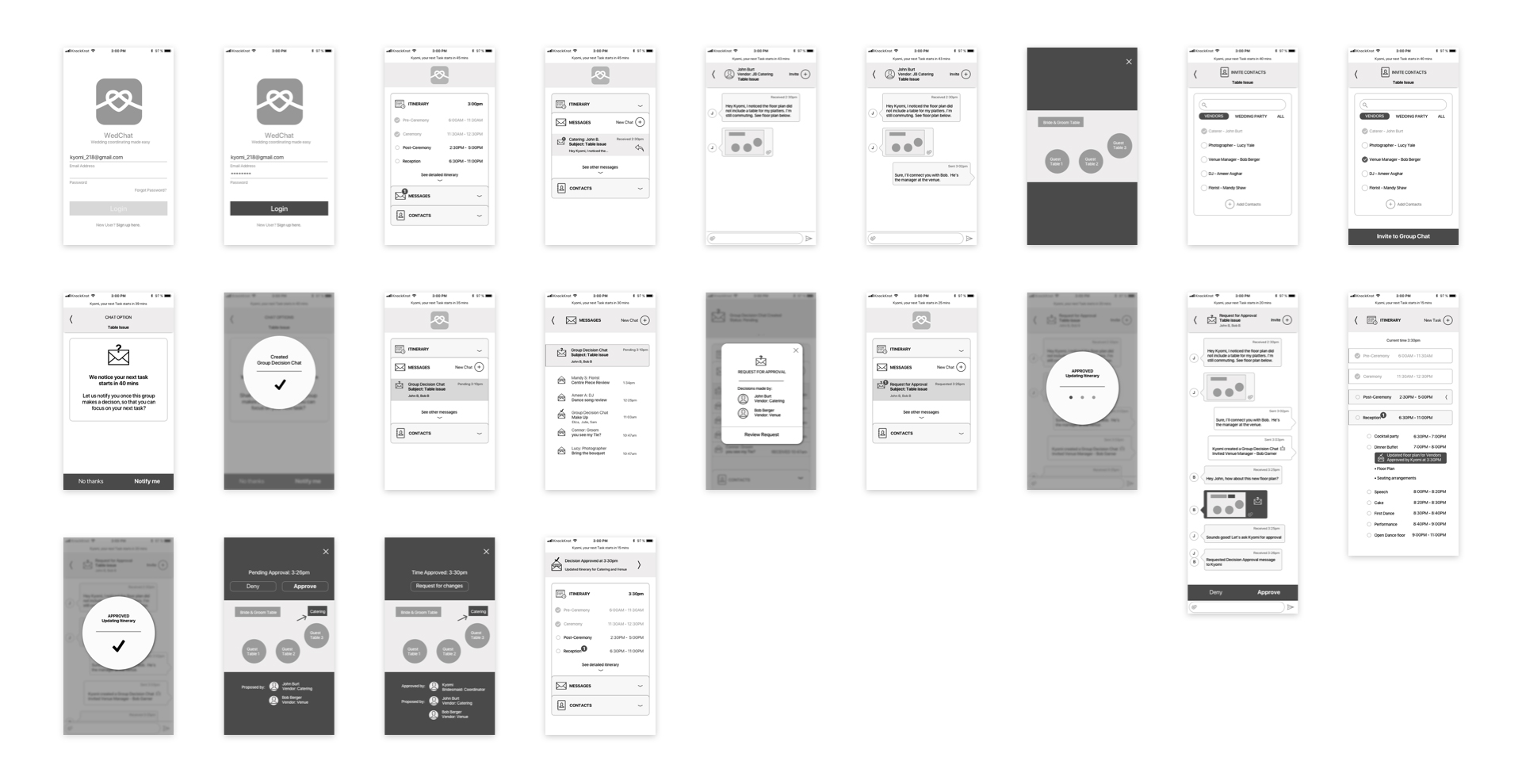
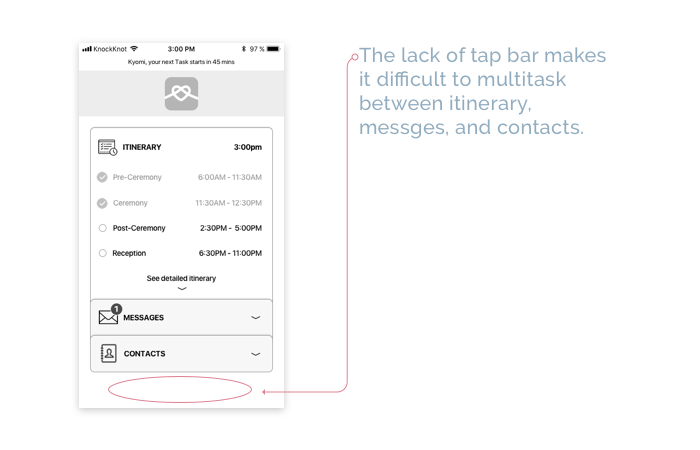
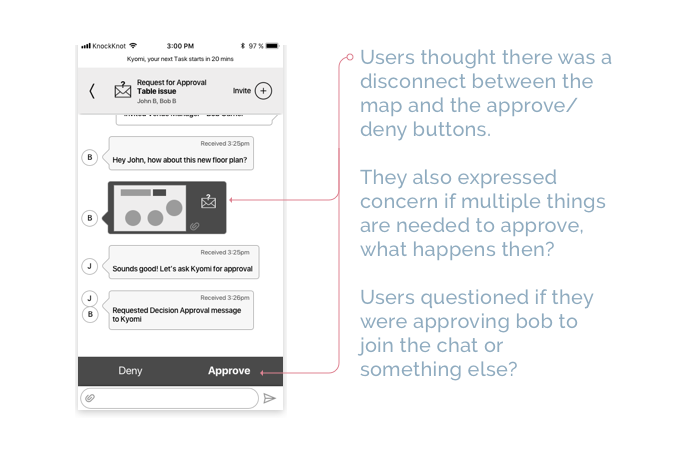
Outcome
Timing and communication
After assessing my data, I narrowed down to two meaningful functions. The ability to check flexible itinerary and to streamline decisions discreetly during the ceremony.
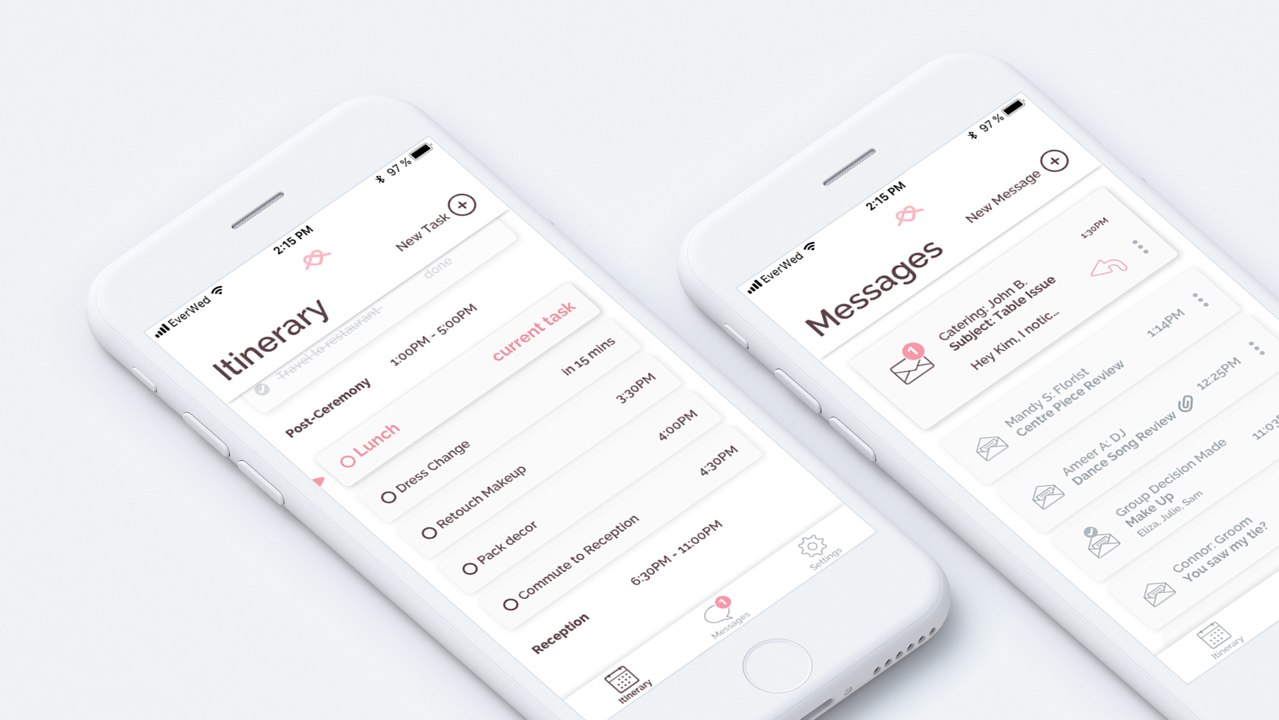
The Smart Itinerary automatically notifies the wedding couple, wedding party and vendors when and where the next task will happen. Users find that the simplified design made it easy to absorb information at a quick glance. Users were delighted to see different options available when they click on the current task bar such as, modify attendance, duration of task, location info, and attendees of the task.
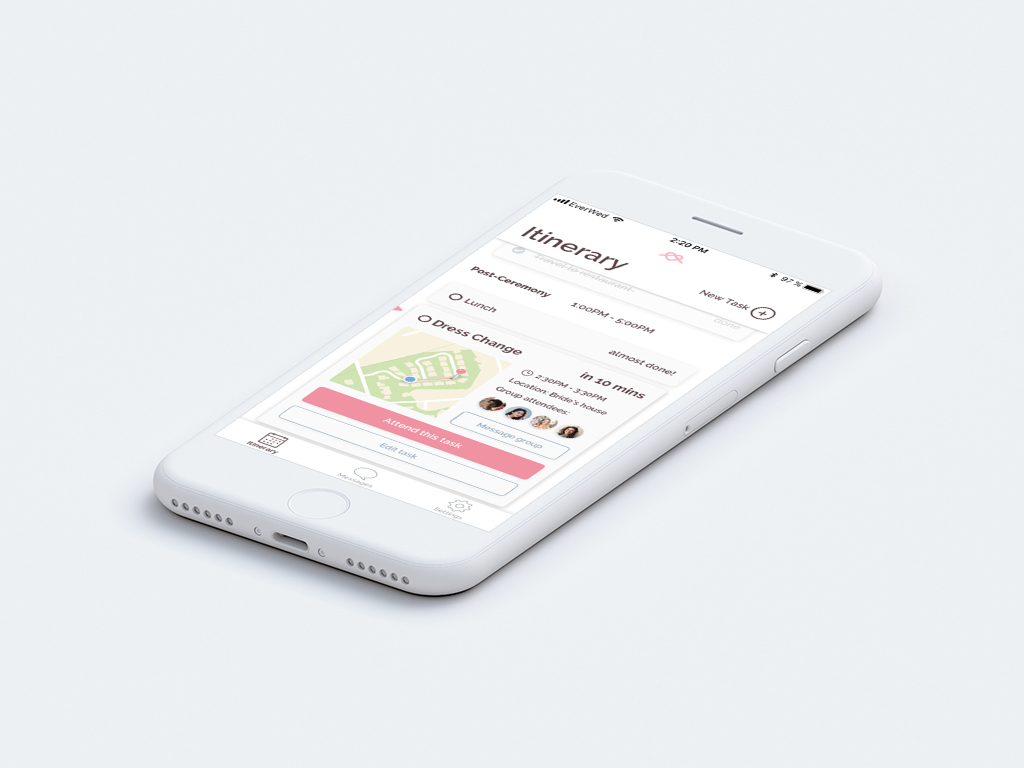
The Smart Message system lets vendors and wedding party to make quick decisions collectively without hindering the wedding couple. Users find it flexible to multitask between itinerary and messages with the tap bar & in-app notifications. They also thought the idea of making quick decisions and communicating in the same chat makes it organized.
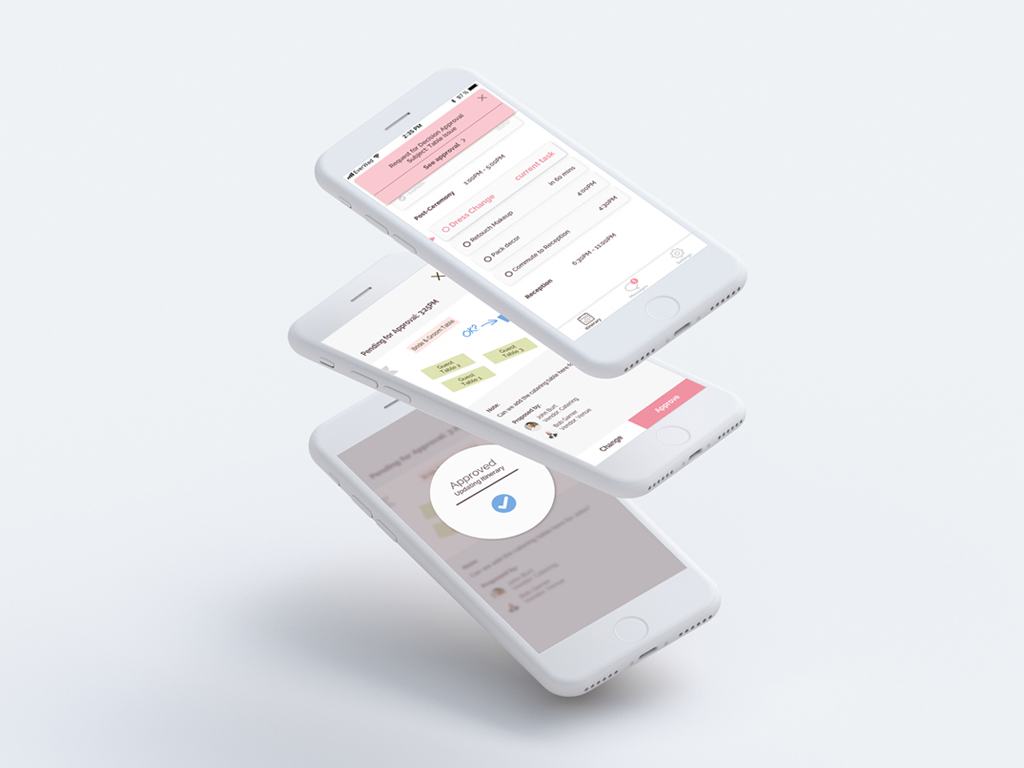
The Smart Itinerary and Smart Message work in tandem that automatically detects if the users have any conflicting tasks and decisions to attend in a short timeframe. A few married couples find this automated notification very useful and wished it existed before their weddings.
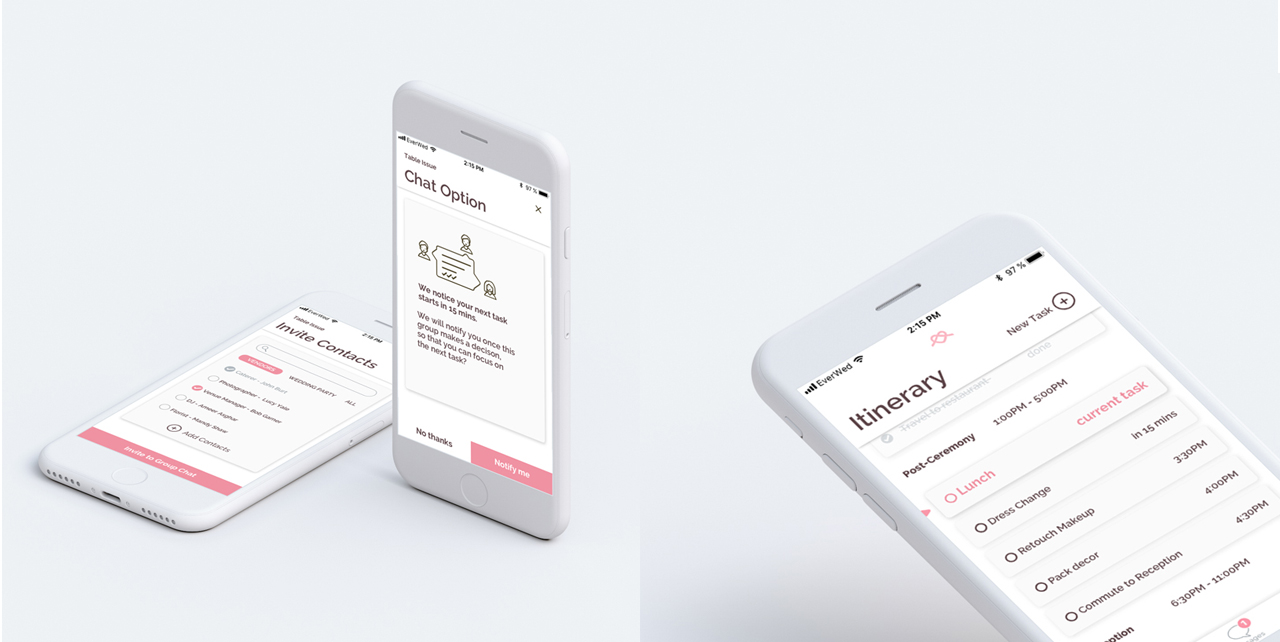
Marketing website
Simply click the image below to see the marketing website and for mobile version, please click on the App Store button.
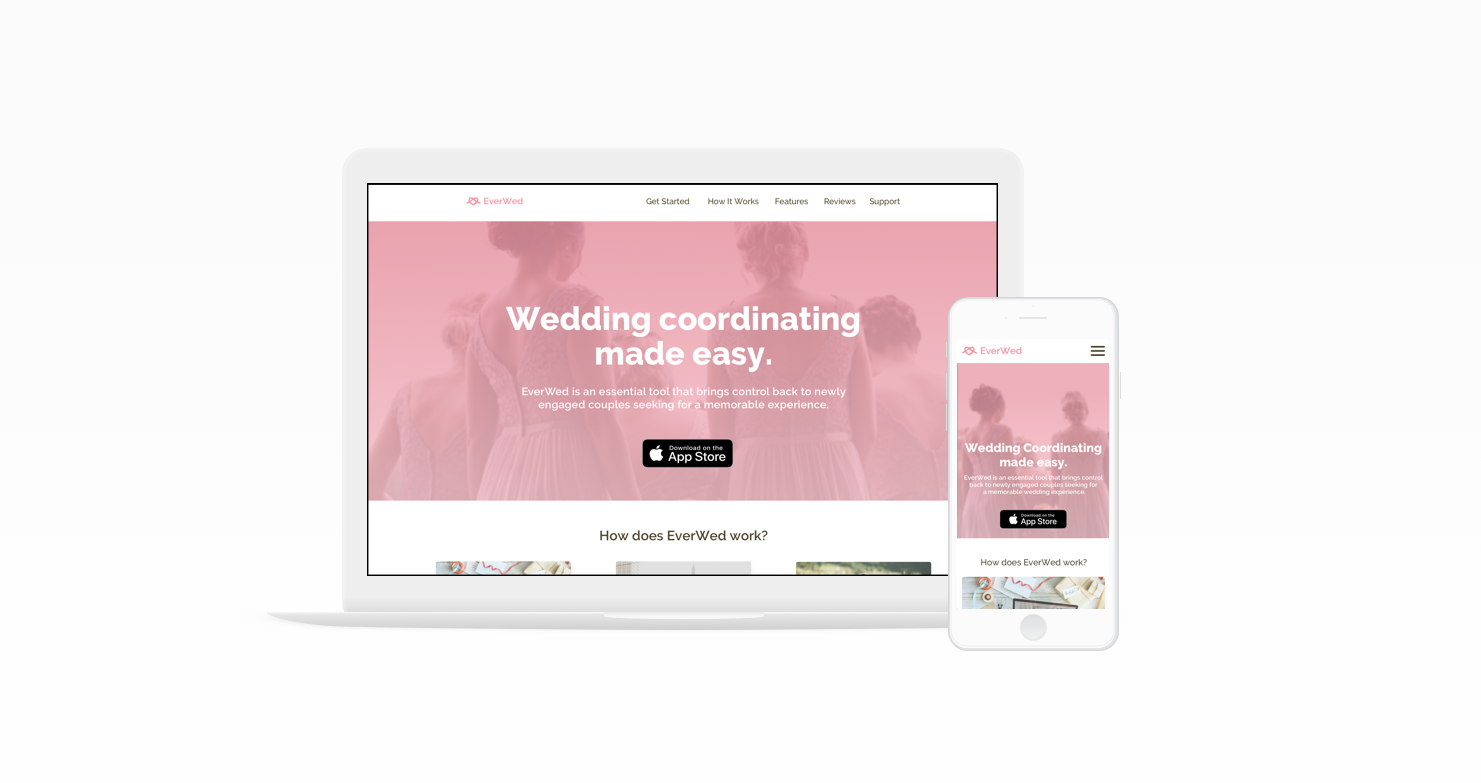
High fidelity screens
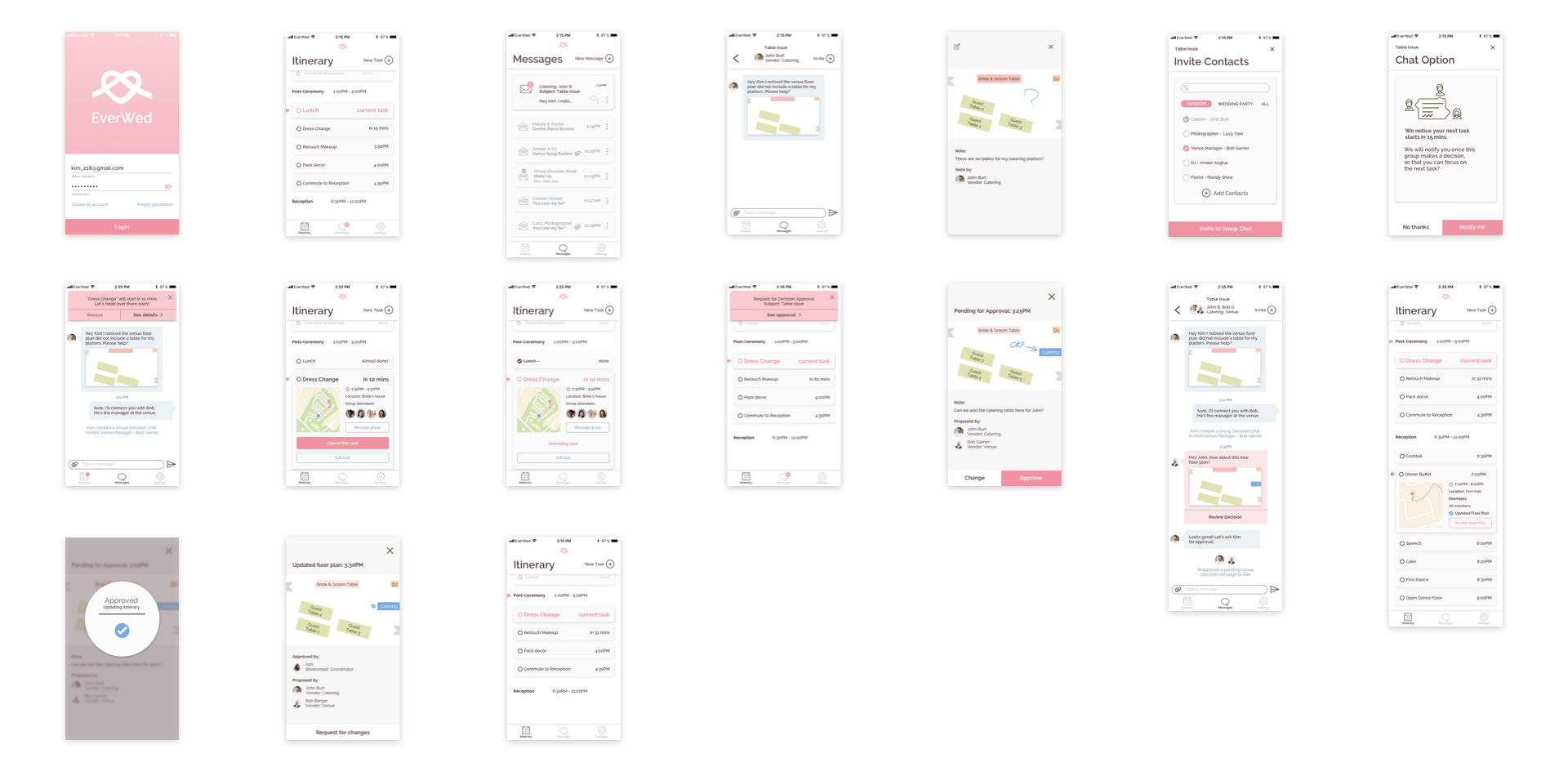
Future considerations and lessons
The whole process taught me how to “Trust the process” and reiterate as much as possible to find that sweet spot for creating a humanistic connection between product and users. Jakob’s Law played a big role in my design decisions and I'll keep improving because design never ends.
Moving forward, I believe using the same framework and explore other events will reach a wider audience. I also want to explore wearable devices and AR technology to add more values to users.